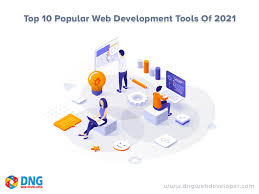Unveiling the Mechanics of Image to Text Technology: A Detailed Study

In the realm of digital technology, the conversion of images to text represents a significant leap forward. This article delves into the intricate workings of this technology, offering insights into its mechanisms, applications, and future potential.
The Foundation of Image Recognition
Understanding image to text technology begins with recognizing the fundamental role of image recognition. Image recognition technology operates by analyzing visual inputs and identifying patterns and features. This process involves several stages, starting with pre-processing where the image is prepared for analysis. Techniques like normalization, scaling, and color correction are commonly employed in this stage to enhance the quality of the input image.
Following pre-processing, feature extraction takes place. In this phase, the technology identifies unique attributes in the image, such as edges, textures, or specific shapes. These features are crucial as they form the basis for the subsequent recognition process. Advanced algorithms, often driven by machine learning techniques, then interpret these features to recognize objects or text within the image.
Integration of Optical Character Recognition
Optical Character Recognition (OCR) is a pivotal component in the image to text conversion process. OCR technology is designed to detect and interpret printed or handwritten text within digital images. It works by analyzing the text’s structure in an image and comparing it to a database of known characters.
The accuracy of OCR has improved significantly with the advent of deep learning and neural networks. These technologies enable OCR systems to learn from a vast array of text styles and fonts, enhancing their ability to recognize text in various contexts and formats accurately. The process involves segmenting the text into lines, words, and then individual characters, which are then compared against the database for identification.
Deep Learning’s Role in Enhancing Accuracy
Deep learning, a subset of machine learning, plays a crucial role in improving the accuracy of converting images to text. Utilizing neural networks, deep learning algorithms can process and analyze vast amounts of data. In the context of image to text technology, these algorithms learn from a multitude of images, identifying intricate patterns and nuances that might be missed by traditional methods.
Convolutional Neural Networks (CNNs) are particularly effective in image recognition tasks. They are adept at processing pixel data and recognizing spatial hierarchies in images, making them ideal for detecting text and characters in various styles and backgrounds. The ability of CNNs to adapt to different text formats and backgrounds contributes significantly to the robustness and versatility of particular image to text converter.
Challenges and Solutions in Image to Text Conversion
Despite the advancements, image to text technology still faces several challenges. One of the primary issues is dealing with low-quality images or text. Poor resolution, distorted text, and uneven lighting conditions can significantly impact the accuracy of text recognition. To address this, advanced algorithms are being developed that can enhance image quality and apply corrective measures to improve text visibility.
Another challenge is the recognition of handwritten text, which varies significantly in style and legibility. Machine learning models are being trained on diverse handwriting samples to improve their ability to accurately interpret handwritten text. Additionally, context-aware algorithms are being implemented, which use the surrounding context to make more accurate guesses about ambiguous characters.
Future Prospects and Applications
The future of image to text technology is promising, with potential applications across various sectors. In the field of accessibility, this technology can aid visually impaired individuals by converting written text into audible speech. In the archival sector, it can be used to digitize historical documents, making them more accessible and searchable. Moreover, in the realm of artificial intelligence, this technology is expected to play a crucial role in developing more intelligent and intuitive systems. As machine learning algorithms become more sophisticated, we can anticipate more accurate and efficient image to text conversion, opening new possibilities in how we interact with digital content.
In conclusion, the journey of image to text technology is an ongoing one, marked by continual advancements and expanding possibilities. From its foundational mechanisms to its future prospects, this technology stands as a testament to human ingenuity and the endless potential of digital innovation.






